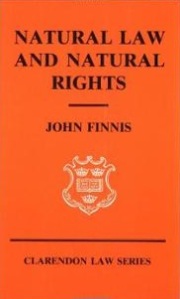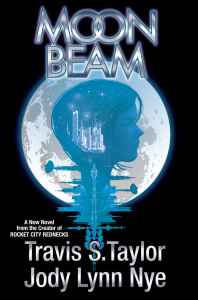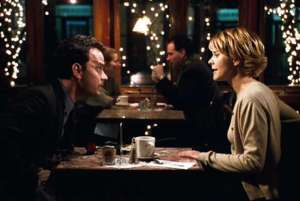PBS is conducting a poll asking about our favorite novels in connection with a TV mini-series, “The Great American Read.” Through October 17, we can vote each day for one or more of 100 candidates. I haven’t watched the TV shows—but the poll alone is fascinating.
In my area, Fairfax County Public Libraries is running its own variant. They’ve broken down the 100 books and series into brackets, like a tournament. We vote on a series of pairs—which of the two we prefer—and the candidates get whittled gradually down to a climactic final round. They’re about halfway through at the moment.
The Best and the Best-Loved
Looking at somebody else’s “Top Ten” (or Top 100, or generally Top N) list is always interesting. We may be talking about books, classic rock songs, movie heroes and villains, or almost anything: the most common reaction, I suspect, is when we look at some of the entries and ask ourselves, how could that possibly have gotten on the list? Or, conversely, how could they ever have left out this?
Obviously a list of the “twelve tallest buildings” or “five longest rivers” is going to be relatively uncontroversial. But when there’s no quantitative measure that can be applied, the lists are bound to have a subjective element. Reading them stimulates us to ask—what could were the listmakers have been thinking when they made those choices?
With the Great American Read (“TGAR”), the subjective side is even more emphasized, because the list (and the poll) is about “America’s 100 best-loved novels,” not the best novels. The criteria aren’t the same. There are books we respect, but don’t like. My favorite piece of music, as it happens, isn’t what I would judge the greatest piece of music. A more personal appeal is involved.
Someone for Everyone
It’s clear that PBS was at pains to include something for everyone. The books cover a wide range of genres. The list includes plenty of “classics”—the ones we got assigned in high school—and also a lot of popular volumes that couldn’t be considered classics by any stretch of the imagination. (I suspect there are no high-school reading curricula that include Fifty Shades of Grey.)
In other words, we’ve got our “guilty pleasures” right alongside acknowledged masterpieces. I always enjoy the way alphabetical listings produce similarly odd bedfellows: on my bookshelf, Jane Austen rubs shoulders with Isaac Asimov, while Tolkien is bracketed by James Thurber and A.E. van Vogt.

 Almost any reader should find something to vote for in the TGAR collection. If you don’t like Tom Sawyer, how about Alice in Wonderland? Not enthused about The Godfather—try The Pilgrim’s Progress? If you’re not in the mood for 1984, maybe you’ll find Anne of Green Gables more congenial.
Almost any reader should find something to vote for in the TGAR collection. If you don’t like Tom Sawyer, how about Alice in Wonderland? Not enthused about The Godfather—try The Pilgrim’s Progress? If you’re not in the mood for 1984, maybe you’ll find Anne of Green Gables more congenial.
By the same token, I’m guessing almost no one would accept every book on the list as a favorite. If there’s someone whose personal top ten list includes The Handmaid’s Tale, Atlas Shrugged, and The Chronicles of Narnia, I’d like to meet them.
The F&SF Division
 In my own sandbox, the science fiction and fantasy field, the listmakers came up with an interesting cross-section. I was a little surprised to see Asimov’s Foundation series on the list: it’s great stuff, and an SF classic, but I’d have thought it was “inside baseball,” widely known only among card-carrying fans. Another classic, Frank Herbert’s Dune, is probably more widely read. (I notice the entry for Dune is not marked as a series, which is a good thing. While there are quite a few follow-on Dune books, after the original the quality drops off exponentially.)
In my own sandbox, the science fiction and fantasy field, the listmakers came up with an interesting cross-section. I was a little surprised to see Asimov’s Foundation series on the list: it’s great stuff, and an SF classic, but I’d have thought it was “inside baseball,” widely known only among card-carrying fans. Another classic, Frank Herbert’s Dune, is probably more widely read. (I notice the entry for Dune is not marked as a series, which is a good thing. While there are quite a few follow-on Dune books, after the original the quality drops off exponentially.)
Other SF picks are more contemporary. We’ve got The Martian, which I’ve mentioned before, and Ready Player One, which was just made into a movie this year—both good choices (by my lights), though not yet perhaps seasoned enough to be classics like the Asimov and Herbert entries.
We’ve got the comedic Hitchhiker’s Guide to the Galaxy, the classic Frankenstein, the satirical Sirens of Titan, the young adult Hunger Games, SF horror in Jurassic Park, dystopian tales in both 1984 and The Handmaid’s Tale. We have what you might call prehistorical fiction, The Clan of the Cave Bear, which I’d class as a variety of SF, and time-travel romance in Outlander (also recently come to video). A Dean Koontz novel, Watchers, which I’d never heard of, may represent the SF thriller. Then there’s Atlas Shrugged, which probably belongs in SF given a technological premise, although these days it’s more often thought of as a political tract.
Of course it’s always possible to regret the omissions—Heinlein or Brin or Bujold, for example—but a list of 100 nationwide favorites in all genres is never going to be able to pick up every quality work. Since the TGAR candidates were largely chosen by a random survey of 7200 Americans, it’s easy to see why more widely-read examples are favored, whether or not they represent the highest quality. The focus on American readers also introduces some selection bias, which might account for omitting, say, Arthur C. Clarke.
 Over in fantasy, the “high fantasy” epic is well represented by The Lord of the Rings, The Wheel of Time, and A Song of Ice and Fire (Game of Thrones), with the children’s division held down by the Narnia tales and Harry Potter. Again, there are some familiar subgenres: satire (Gulliver’s Travels), whimsy or children’s books (Alice, The Little Prince), horror (The Stand), young adult (Twilight).
Over in fantasy, the “high fantasy” epic is well represented by The Lord of the Rings, The Wheel of Time, and A Song of Ice and Fire (Game of Thrones), with the children’s division held down by the Narnia tales and Harry Potter. Again, there are some familiar subgenres: satire (Gulliver’s Travels), whimsy or children’s books (Alice, The Little Prince), horror (The Stand), young adult (Twilight).
I was a little surprised to see three entries in what one might call the Christian fantasy column: The Shack, Left Behind, and something called Mind Invaders. When an item turns up that you’ve never heard of, it’s a useful reminder of how far-ranging people’s tastes really are.
An Author’s Range
The list can also spark some interesting reflections on the range of a prolific author. Probably most people would pick Dune as Frank Herbert’s leading entry, and Pride and Prejudice as the most well-loved of Austen’s several great novels. But the only candidate for Dickens on the list, for example, is Great Expectations.
 Now, I’m fond of Dickens, but Great Expectations isn’t one of the stories I particularly like. Yet it does seem to come up frequently whenever Dickens is mentioned. (I don’t even hear quite as much about A Tale of Two Cities, which we did read in high school—possibly chosen for school because it’s relatively short; assigning a class one of Dickens’ doorstoppers would have consumed an entire semester’s worth of reading time.) Is Expectations really representative of Dickens’ best? I’d have picked Little Dorrit or Our Mutual Friend, say, if I’d been in on the original survey. Or David Copperfield, maybe, as the most accessible to a modern reader. But, again, the list suggests there’s a reservoir of interest in Expectations that I just don’t happen to share—a broadening thought.
Now, I’m fond of Dickens, but Great Expectations isn’t one of the stories I particularly like. Yet it does seem to come up frequently whenever Dickens is mentioned. (I don’t even hear quite as much about A Tale of Two Cities, which we did read in high school—possibly chosen for school because it’s relatively short; assigning a class one of Dickens’ doorstoppers would have consumed an entire semester’s worth of reading time.) Is Expectations really representative of Dickens’ best? I’d have picked Little Dorrit or Our Mutual Friend, say, if I’d been in on the original survey. Or David Copperfield, maybe, as the most accessible to a modern reader. But, again, the list suggests there’s a reservoir of interest in Expectations that I just don’t happen to share—a broadening thought.
In a similar way, it may be harder to come up with the most representative Stephen King or Mark Twain novel—there are so many of them. (The listmakers did confine themselves deliberately to one entry per author, which makes sense.) Even within a single author’s oeuvre, it’s intriguing to see which work a majority of readers picked as outstanding.
Incommensurable Goods
After enough of this kind of reflection, we may find ourselves with a certain skepticism about the whole comparison process.
The Fairfax County bracket system, entertaining as it is, only strengthens this impression. There is a sorting algorithm to create a ranking by going down the list and placing each item in turn in relation to those above it. And it’s fun to weigh random pairs of works against each other, even within the particular classifications the libraries used (Classics, Midcentury, Late Century, Contemporary).
But the match-up process yields some odd results. (I understand sports tournament designers also have to take care to ensure good playoffs.) There’s some plausibility in a face-off between Pride and Prejudice and Wuthering Heights. But what should we make of pitting Anne of Green Gables against War and Peace? The Great Gatsby against Alice? In some cases the entries hardly seem to be in the same weight class, so to speak. It strikes me as a no-brainer to match The Lord of the Rings against Where the Red Fern Grows, a novel I’ve never heard of.
Even within a given author’s work, one can wonder about how conclusive a comparison actually is. There’s a scale factor that makes some matches clear: Asimov’s sweeping Foundation series seems a more logical “top” candidate than even an excellent short story like “The Last Question” or “Robbie,” just because of its greater scope and size. But it can be hard to decide between stories on the same scale—two great short stories, say, or two very different novels.
 At this point I’m reminded of an argument made by philosopher John Finnis in his Natural Law and Natural Rights (1980). Noting that one of the classic objections against utilitarianism (“the greatest good for the greatest number”) is the inability in practice to reduce all possible good and bad things to a uniform measure of “utility,” Finnis takes the position that there are a number of categories of human goods that can’t be reduced to each other. His list of such goods includes life, knowledge, play, aesthetic experience, friendship, practical reasonableness, and religion (ch. IV.2, pp. 86-90). These goods aren’t interchangeable. They are literally “incommensurable”—they can’t be measured against each other.
At this point I’m reminded of an argument made by philosopher John Finnis in his Natural Law and Natural Rights (1980). Noting that one of the classic objections against utilitarianism (“the greatest good for the greatest number”) is the inability in practice to reduce all possible good and bad things to a uniform measure of “utility,” Finnis takes the position that there are a number of categories of human goods that can’t be reduced to each other. His list of such goods includes life, knowledge, play, aesthetic experience, friendship, practical reasonableness, and religion (ch. IV.2, pp. 86-90). These goods aren’t interchangeable. They are literally “incommensurable”—they can’t be measured against each other.
It’s possible that some similar principle of incommensurability applies to the books we’ve been discussing. Would I want to give up, say, Pride and Prejudice in favor of The Lord of the Rings, or vice versa? They’re unique achievements, and we realize something quite different from reading each of them. We might be able to create some rather vague order of precedence—for example, by the traditional question of what one book you’d want to have with you if marooned on a desert island. But that’s not the same sort of comparison as equating a dollar with ten dimes.
On the other hand, the fun of weighing (note the measurement analogy) one story against another suggests there’s some common element, or elements, in our enjoyment of a good book. If nothing else, such match-ups can get some entertaining discussions going.















 Another primarily female archetype is what we might call the Siren, the mysteriously fascinating and unattainable character with whom the male MC is irresistibly obsessed—frequently
Another primarily female archetype is what we might call the Siren, the mysteriously fascinating and unattainable character with whom the male MC is irresistibly obsessed—frequently